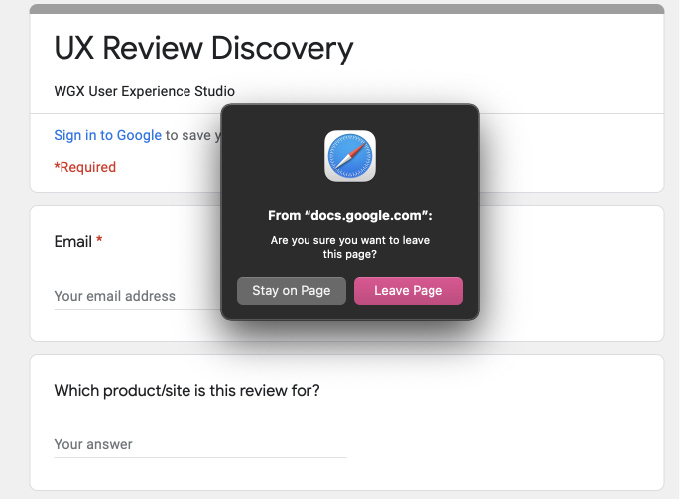Respect Users’ Time and Effort in Your Forms
Your long-suffering user has painstakingly entered field after field of data into your form, often on a tiny mobile screen with an on-screen keyboard.
Don’t clear this data unless the user specifically abandons the flow (maybe by hitting cancel). If clicking something is going to reload the page, and this might result in a blank form, then make sure you save the user-entered data first.

Figure 43.1: Some sites and browser combinations will warn you before leaving or reloading to prevent accidental loss of user-entered data
This is a great example of where technical reality runs against UX goals. On the one hand, if a browser could speak, it would likely argue that reloading a form should clear it, as we’re telling the browser to fetch the empty form again.
However, we are not robots, we are humans, and so much of good UX design is about empathy and respect. This includes respecting the user’...



